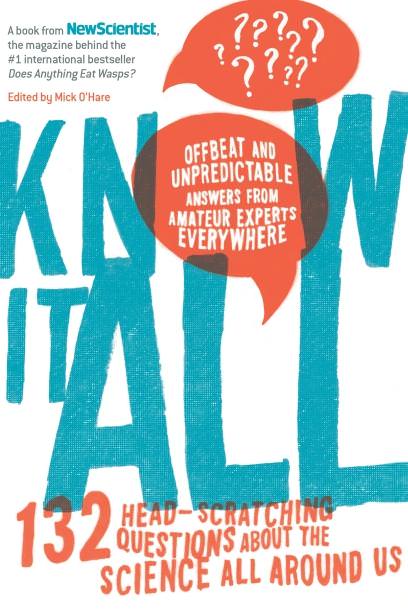Science is typically a male dominated profession, mostly dudes, not a lot of ladies. From researchers to professors, to law makers, woman have a tough time gaining traction in such a heavily gendered field. Today we’re going to talk about what it takes to make it as a woman in science, what additional hurdles you’ll have to navigate, and what resources are available if you’re being harassed or discriminated against.
Continue reading “Astronomy Cast Ep. 399: Women in Science”
Moisture Vaporators, Death Star Construction and Other Real Star Wars Tech
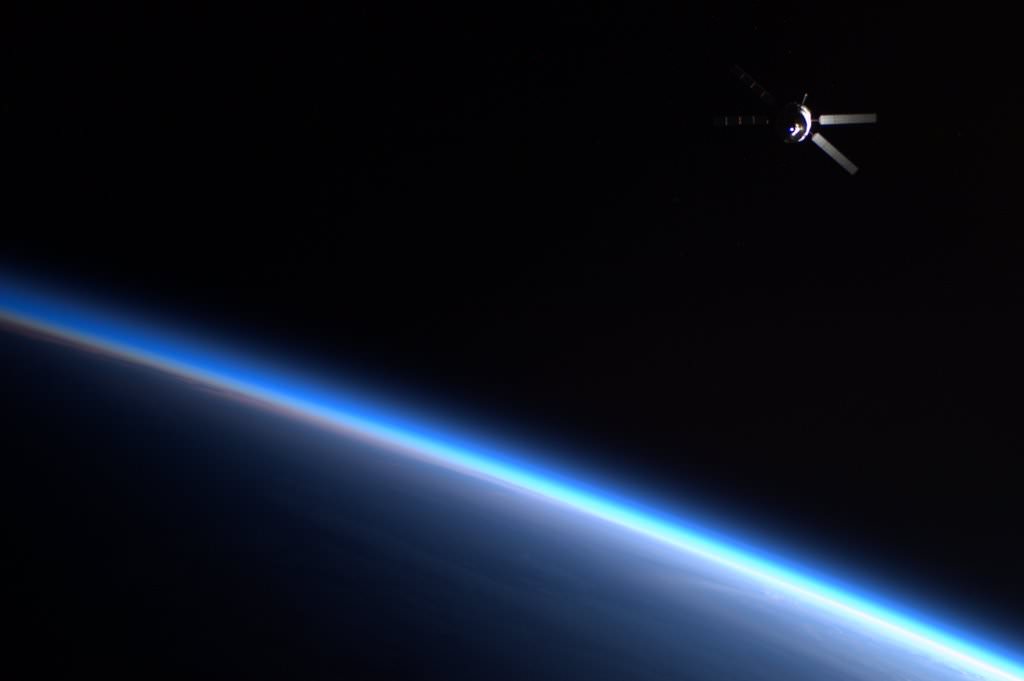
Remember that time an X-Wing fighter flew past the International Space Station? Or when R2D2 saved the ISS crew?
OK, yeah, those things didn’t really happen, but since the first Star Wars movie came out in 1977, there has been a lot of technology developed that mimics the science and tech from the sci-fi blockbuster films. Of course, we now have real robots in space (Robonaut), drones are now everyday items, there are actual holograms (Voxiebox and Fairy Lights) and DARPA has been developing prosthetic limbs that Luke Skywalker would totally use, called the Reliable Neural-Interface Technology (RE-NET). Plus, Boeing is building blaster guns that will use “pew-pew” sound effects from Star Wars. Seriously. The lasers are silent, and so they need to add sound to know for sure they’ve been fired.
Since we all certainly have Star Wars on the brain today (The Force Awakens opens tonight), let’s take a look at a few recent space-related developments that hint of inspiration from the movies:
Continue reading “Moisture Vaporators, Death Star Construction and Other Real Star Wars Tech”
Weekly Space Hangout – Sept 25, 2015: Maggie Scholtz, Mars Rover Drill System Engineer
Host: Fraser Cain (@fcain)
Special Guests:
Maggie Scholtz (@martianmagster), who is a Mechanical Engineer working at JPL. She worked on the Curiosity Rover, primarily on the development of the drill and sampling system.
Guests:
Paul Sutter (pmsutter.com / @PaulMattSutter / AskaSpaceman.com)
Morgan Rehnberg (cosmicchatter.org / @MorganRehnberg )
Dave Dickinson (@astroguyz / www.astroguyz.com)
Ride Along with New Horizons on its Pluto Flyby
On July 14, 2015, after nine and a half years journeying across the Solar System, NASA’s New Horizons spacecraft made its historic close pass of Pluto and its moon Charon. Traveling a relative velocity of nearly 13.8 km/s (that’s almost 31,000 mph!) New Horizons passed through the Pluto system in a matter of hours but the views it captured from approach to departure held the world spellbound with their unexpected beauty. Those images and data – along with a bit of imagination – have been used by space imaging enthusiast Björn Jónsson to create an animation of New Horizons’ Pluto pass as if we were traveling along with the spacecraft – check it out above.
You can find more science images and discoveries about Pluto and Charon from New Horizons here, and see more renderings and animations by Jónsson on his website here.
What About a Mission to Europa?
Europa’s water exists in a layer around the planet, encased in a layer of ice. Could there be life down there?
Hooray! Welcome to the 200th official episode of the Guide To Space!
First off, thank you. Thank you for watching, liking, sharing, subscribing and being a patron of our show. Yes, you. Thank you.
So to celebrate, a few weeks ago we invited the members of the Weekly Space Hangout Crew Google+ Community to suggest topics for episodes, and the winner would receive a precious iron-nickel meteorite. Congratulations Andres Munoz, this meteorite is for you.
This episode, chosen by Andres, is for everyone.
The search for life in the Solar System is about the hunt for water. Wherever we find liquid water on Earth, we find life. I’m talking everywhere. In the most briny, salty pools in Antarctica, in the hottest hot springs in Yellowstone, under glaciers, and kilometers deep underground.
So we go searching for liquid water in the Solar System.
You might be surprised to learn that Jupiter’s moon Europa has the most water in the entire Solar System. If you took all the water on Earth, collected it into a big sphere, it would measure almost 1,400 kilometers across.
Europa’s water would measure nearly 1,800 kilometers.All that water exists in a layer around Europa, encased in a layer of ice. How thick? We don’t know.
Is there life down there? We don’t know.You can say there might be, and it wouldn’t be untrue. However, if you say there isn’t, that’s way less interesting for clickbait purposes. Whenever we don’t know the answers to fundamental and intriguing questions like that, it’s time to send a mission.
Good news! An actual mission to Europa is in the works right now. In 2015, NASA approved the development of an orbiter mission to Europa. If all goes well, and nothing gets cancelled…
And nothing will get cancelled, right? Right? I heard Firefly. Which one of you said Firefly?!?
According to the plan, a spacecraft will launch in the 2020s, carrying 9 instruments to Europa. Most will be familiar cameras, mass spectrometers, and the like, to study the surface of Europa to a high level of resolution. Over the course of 45 flybys, the spacecraft will get down as close as 25 kilometers and capture it with incredible resolution.

Perhaps the most exciting, and controversial instrument on board the new Europa Orbiter mission will be its ice-penetrating radar. Mission planners battled over installing a radar this sophisticated, as it will be an enormous drain on the orbiter’s power.
This for us is incredibly exciting. It will allow the spacecraft to map out the depth and thickness of Europa’s icy exterior. Is it thick or thin? Are there pockets of water trapped just below the surface, or is it tough shell that goes on for dozens of kilometers?
The worst case scenario is that the shell goes thicker than the radar can reach, and we won’t even know how far it goes.
Whatever happens, the Europa orbiter will be a boon to science, answer outstanding questions about the moon and the chances of finding life there.
We’re just getting started. What we really want to send is a lander. Because of the intense radiation from Jupiter, the Sun, and space itself, the surface of the ice on Europa would be sterilized. But dig down a few centimeters and you might find life that’s protected from the radiation.
A future Europa lander might be equipped with a heated drill attached to a tether. The lander would be have with a heat-generated radioisotope thermoelectric generator, like most of NASA’s big, outer Solar System spacecraft.
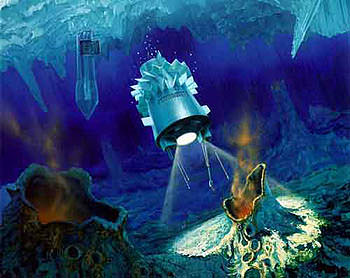
But in addition to using it for electricity, it’ll use the raw heat to help a tethered drill to grind through the ice a few meters and sample what’s down there.
Drilling more than a few meters is probably the stuff of science fiction. Russian scientists in Antarctica drilled for almost two decades to get through 4,000 meters of ice above Lake Vostok. Imagine trying to get through 100 kilometers of the stuff, on a distant world, with a robot.
But, since I’ve talked about moving the Sun, and terraforming the Moon, maybe I shouldn’t put any bounds on my imagination. Nuclear-powered Europa submarines will get us swimming with the singing Europan space whales in no time.
Europa is the best place to search the Solar System for life, and I’m excited to see what the upcoming Europa Orbiter mission turns up. And I’m even more excited about the possibility of any future lander missions.
It was a lot of fun wrapping my brain around a topic chosen by the fans. What topic would you like us to cover next? I’ve got a whole pocket of meteorites here. Put it in the comments below.
First, I want to thank everyone. It’s been a crazy race getting up to 200 episodes, but it’s been a blast all the way through. Thanks again for all your support and here’s to 200 more!
Astronomy Cast Ep. 376: The Miller-Urey Experiment
Evolution explains how life adapts and evolves over eons. But how did life originate? Chemists Miller and Urey put the raw chemicals of life into a solution, applied an electric charge, and created amino acids – the building blocks of life.
Continue reading “Astronomy Cast Ep. 376: The Miller-Urey Experiment”
Book Review and Giveaway: Know It All: 132 Head-Scratching Questions About the Science All Around Us
“An investment in knowledge always pays the best interest.”
— Benjamin Franklin
One of the greatest qualities we possess as humans is our ability to ask questions. Our quest for knowledge and answers about the world carries us beyond our everyday borders and attitudes. Curiosity may not have been good for the cat, but it is an essential growth tool for the human mind.
Know It All: 132 Head-Scratching Questions About the Science All Around Us, is a fun and educational collection of thought provoking questions and answers. Although the collection is edited by Mick O’Hare from New Scientist magazine, the contributors are drawn from the scientific community and amateur experts found around the world. Taken directly from the “Last Word” column at New Scientist, this assemblage is a diverse assortment of Q&As ranging in scope from the microscopic to the hypothetical.
Find out how you can win a copy of this book, below.
The most appealing part of the book is its global spirit of science and thirst for knowledge. One gentleman out of South Africa provides many insightful answers to questions originating from the United Kingdom, the Netherlands and Australia. Have you ever wondered why your legs may feel wobbly when standing at a cliff top? J. Richfield from South Africa gives an adept explanation.
On pg. 223 a New Scientist reader from North Carolina, USA brings up the Costa Concordia disaster and asks why there was concern about being ‘sucked under’ if the boat sank. The two cited answers are from the well versed contributor in South Africa and from a gentleman in the UK.
Among my wanderings within the book I have gained insight into the value of regularly using mouthwash and what medicines may last longer than their expiration date and why. I am thankful to the correspondent who asked why trick birthday candles can’t be blown out; now I know that the wick has magnesium powder in it and the accompanying science that goes along with it.
Hungry for answers to a wide assortment of questions? Dive into this book and find a treasure of answers.
Thanks to The Experiment Publishing, Universe Today has one copy of this book to give away to our readers. The publisher has specified that for this contest, winners need to be from the US or Canada.
In order to be entered into the giveaway drawing, just put your email address into the box at the bottom of this post (where it says “Enter the Giveaway”) before Monday, February 23, 2015. We’ll send you a confirmation email, so you’ll need to click that to be entered into the drawing. If you’ve entered our giveaways before you should also receive an email with a link on how to enter.
We’re only going to use these email addresses for Universe Today giveaways/contests and announcements. We won’t be using them for any other purpose, and we definitely won’t be selling the addresses to anyone else. Once you’re on the giveaway notification list, you’ll be able to unsubscribe any time you like.
CATS Out of The Bag, Crawling Around ISS for Science Down Below
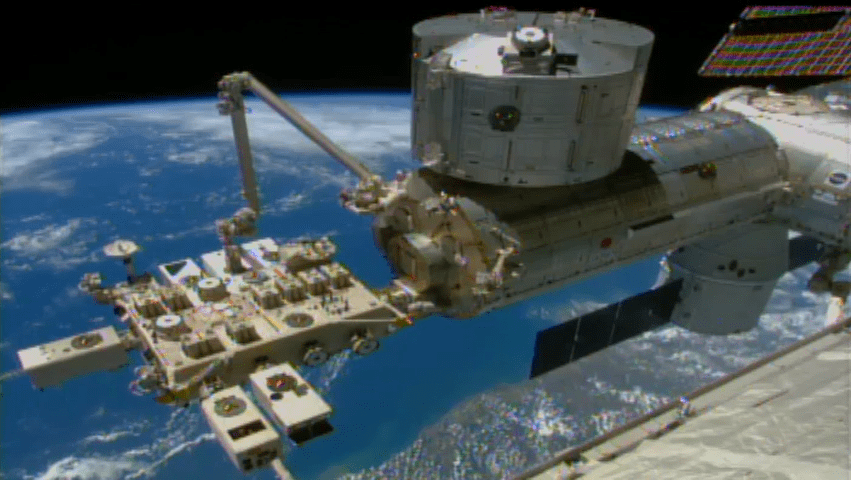
The Japanese robotic arm installs the CATS experiment on an external platform on Japan’s Kibo lab module. The SpaceX Dragon commercial cargo craft is seen at the right center of the image. Credit: NASA TV
See way cool installation video below[/caption]
“Robotic controllers let the CATS out of the bag!” So says NASA spokesman Dan Huot in a cool new NASA timelapse video showing in detail how CATS crawled around the space stations gangly exterior and clawed its way into its new home – topped off with a breathtaking view of our home planet that will deliver science benefits to us down below.
The CATS experiment was installed on the exterior of the International Space Station (ISS) via a first ever type of robotic handoff, whereby one of the stations robotic arms handed the rectangular shaped instrument off to a second robotic arm. Sort of like relays runners passing the baton while racing around the track for the gold medal.
In this case it was all in the name of science. CATS is short for Cloud Aerosol Transport System.
Ground controllers at NASA’s Johnson Space Center in Houston plucked CATS out of the truck of the recently arrived SpaceX Dragon cargo delivery vehicle with the Special Purpose Dexterous Manipulator (Dextre). Then they passed it off to a Japanese team of controllers at JAXA, manipulating the second arm known as the Japanese Experiment Module Remote Manipulator System. The JAXA team then installed CATS onto an external platform on Japans Kibo laboratory.
CATS is a new Earth Science instrument dedicated to collecting continuous data about clouds, volcanic ash plumes and tiny airborne particles that can help improve our understanding of aerosol and cloud interactions and improve the accuracy of climate change models.
The remote-sensing laser instrument measures clouds and the location and distribution of pollution, dust, smoke, and other particulates and aerosols in the atmosphere that directly impacts the global climate.
Data from CATS will be used to derive properties of cloud/aerosol layers at three wavelengths: 355, 532, 1064 nm.
Check out this cool NASA ‘Space to Ground’ video showing CATS installation
Video caption: NASA’s Space to Ground on 1/23/15 covers CATS Out of The Bag. This is your weekly update on what’s happening aboard the International Space Station. Got a question or comment? Use #spacetoground to talk to us.
All the movements were conducted overnight by robotic flight controllers on the ground. They installed CATS to an external platform on Japan’s Kibo lab module.
CATS is helping to open a new era on the space station research dedicated to expanding its use as a science platform for making extremely valuable remote sensing observations for Earth Science.
The CATS instrument is the fourth successful NASA Earth science launch out of five scheduled during a 12-month period. And it is the second to be installed on the exterior of the ISS, following ISS-RapidScat that was brought by the SpaceX CRS-4 Dragon.
The fifth launch — the Soil Moisture Active Passive satellite — is scheduled for Jan. 29 from Vandenberg Air Force Base in California.
CATS was launched to the station as part of the payload aboard the SpaceX Dragon CRS-5 cargo vessel bolted atop the SpaceX Falcon 9 for the spectacular nighttime blastoff on Jan. 10 at 4:47 a.m. EST from Cape Canaveral Air Force Station in Florida.
CATS was loaded in the unpressurized rear trunk section of Dragon.
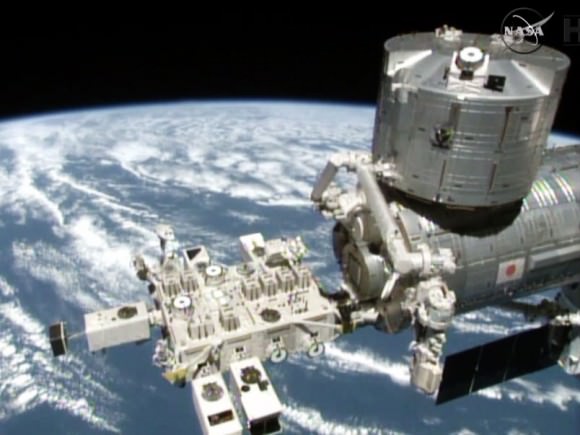
The new CATS experiment delivered by the SpaceX commercial cargo craft will be installed on a platform outside Japan’s Kibo Laboratory module. Credit: NASA
The Dragon CRS-5 spacecraft was loaded with over 5108 pounds (2317 kg) of scientific experiments, technology demonstrations, the CATS science payload, student research investigations, crew supplies, spare parts, food, water, clothing and assorted research gear for the six person crew serving aboard the ISS.
It successfully rendezvoused at the station on Jan. 12 after a two day orbital chase, delivering the critical cargo required to keep the station stocked and humming with science.
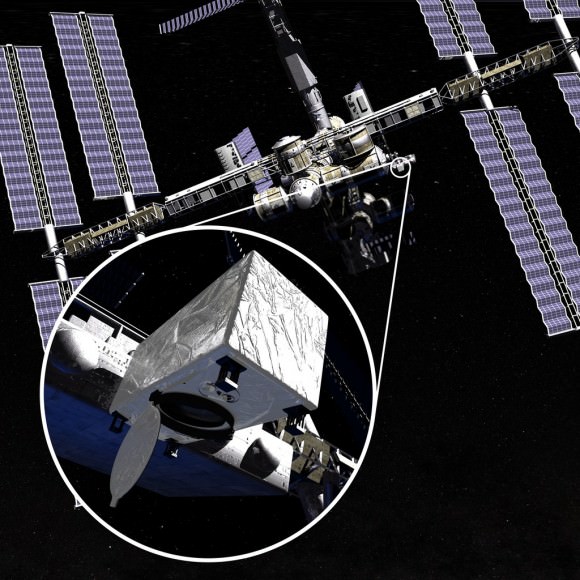
Stay tuned here for Ken’s continuing Earth and planetary science and human spaceflight news.
All About That Space
The Pathways Interns of NASA’s Johnson Space Center have been working very hard lately with the successful Orion launches. They decided it was time to celebrate, and to remind everyone what they’re really excited about. So they’ve taken the hit song “All About that Bass,” by Meghan Trainor, and rewritten the lyrics to be a little more appropriate for their purpose. They wanted to raise excitement over the successful Orion tests, and promote the amazing work going on at NASA and Johnson Space Center. They’re bringing rockets back!
Is Phobos Doomed?
What fate awaits Phobos, one of the moons of Mars?
“All these worlds are yours except Europa, attempt no landing there.”
As much as I love Arthur C. Clarke and his books, I’ve got to disagree with his judgement on which moons we should be avoiding. Europa is awesome. It’s probably got a vast liquid ocean underneath its icy surface. There might even be life swimming down there, ready to be discovered. Giant freaky Europa whales or some kind of alien sharknado. Oh man, I just had the BEST idea for a movie.
So yea, Europa’s fine. The place we should really be avoiding is the Martian Moon Phobos. Why? What’s wrong with Phobos? Have I become some kind of Phobo…phobe? Is there any good reason to avoid this place?
Well first, its name tells us all we need to know. Phobos is named for the Greek god of Horror, and I don’t mean like the usual gods of horror as in Clive Barker, John Carpenter or Wes Craven, I mean that Phobos is the actual personification of Fear… possibly with a freaky lion’s head. And… there’s also the fact that Phobos is doomed.
Literally doomed. Living on borrowed time. Its days are numbered. It’s been poisoned and there’s no antidote. It’s got metal shards in its heart and the battery on it’s electro-magnet is starting to brown out. More specifically, in a few million years, the asteroid-like rock is going to get torn apart by the Martian gravity and then get smashed onto the planet.
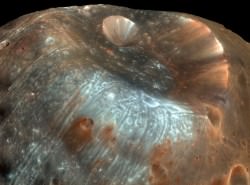
It all comes down to tidal forces. Our Moon takes about 27 days to complete an orbit, and our planet takes around 24 hours to complete one rotation on its axis. Our Moon is pulling unevenly on the Earth and slowing its rotation down.
To compensate, the Moon is slowly drifting away from us. We did a whole episode about this which we’ll link at the end of the episode. On Mars, Phobos only takes 8 hours to complete an orbit around the planet. While the planet takes almost 25 hours to complete one rotation on its axis. So Phobos travels three times around the planet for every Martian day. And this is a problem.
It’s actually speeding up Mars’ rotation. And in exchange, it’s getting closer and closer to Mars with every orbit. The current deadpool gives the best odds on Phobos taking 30 to 50 million years to finally crash into the planet. The orbit will get lower and lower until it reaches a level known as the Roche Limit. This is the point where the tidal forces between the near and far sides of the moon are so different that it gets torn apart. Then Mars will have a bunch of teeny moons from the former Phobos.

(Photo Credit: © Hive Studios)
And then good news! Those adorable moonlets will get further pulverized until Mars has a ring. But then bad news… that ring will crash onto the planet in a cascade of destruction to be described as “the least fun balloon drop of all time”. So, you probably wouldn’t want to live on Mars then either.
Count yourself lucky. What were the chances that we would exist in the Solar System at a time that Phobos was a thing, and not a string of impacts on the surface of Mars.
Enjoy Phobos while you can, but remember that real estate there is temporary. Might I suggest somewhere in the alien sharknado infested waters of Europa instead?
What do you think. Did Arthur C Clarke have it wrong? Should we explore Europa?
And if you like what you see, come check out our Patreon page and find out how you can get these videos early while helping us bring you more great content!


